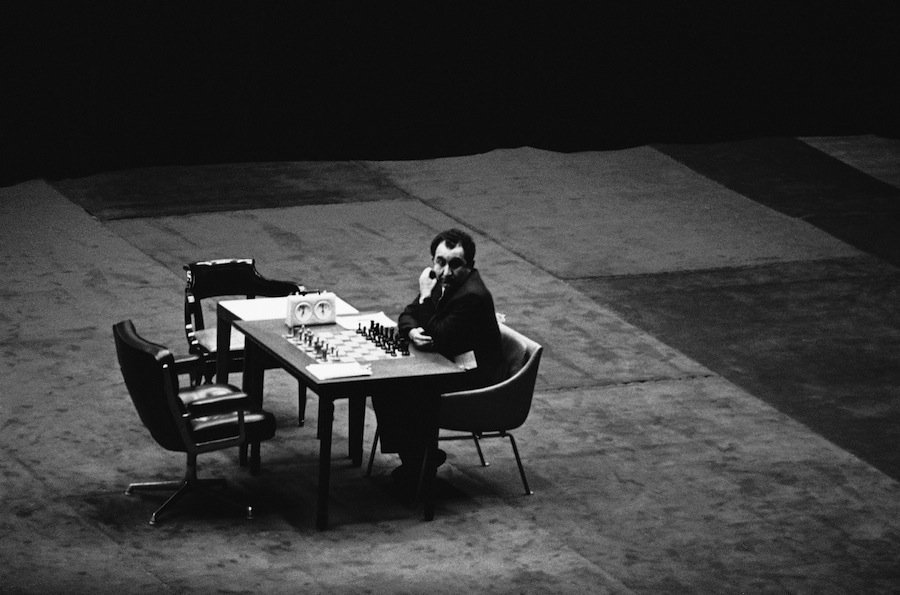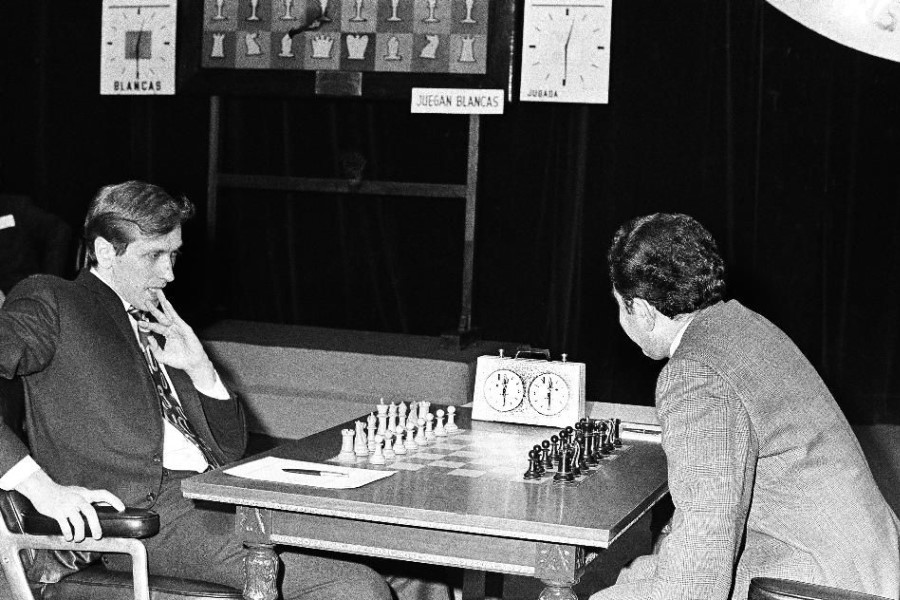Riddle solved: Fischer's 22.Nxd7(?) was a mistake
The 7th game of the Candidates Final 1971 between Bobby Fischer and Tigran Petrosian has been again and again hailed as a strategic masterpiece. After all, Fischer outplayed Petrosian, World Champion from 1963 to 1969 and one of the most resource defensive players of all time, with apparent ease.

Tigran Petrosian is waiting for Fischer to start the game.
Fischer's surprising move 22.Nxd7(?), which trades the "good" knight on c5 for the passive and theoretically "bad" bishop on d7, has fascinated generations of players and analysts.
From a practical point of view it has merit as White's strategy is now very clear: he will use the white-squared bishop to put Black under pressure – and Fischer liked to play and excelled in bishop vs knight endgames. In a practical game and with the clock ticking it is very difficult to hold Black's position after 22.Nxd7+.
However, most engines prefer the move 22.a4!, which increases White's pressure, restricts the scope of Black's bishop on d7 and keeps more pieces on the board. Zoran Petronijevic (Serbia), Charles Sullivan (USA), and many ChessBase readers have analysed this position deeply, and their analyses indicate that White is winning after 22.a4! while 22.Nxd7+ is objectively a mistake.
Zoran Petronijevic has analysed the position in particular depth, and here are his conclusions:
Conclusions:
- The initial position is winning for White.
- Although the game move 22.Nxd7 was praised by various authors, our analyses indicate that 22.a4 was much better. Objectively, 22.Nxd7 is a mistake and only leads to a draw.
- After 22.a4 White is winning.
- 23...Rd6 by Black is a mistake and leads to a lost position. But after 23...d4, Black's best defense, the position is even as Charles Sullivan proves with a lot of relevant lines.
- After reaching a winning position, Fischer did not always find the best. His move 27.f4 is a mistake which gives the win away. Better is 27.a4 after which White wins.
- Petrosian returned the compliment with 27...h4? which is also a mistake. After the better 27...Nb6! Black has a draw (almost all annotators suggested this move, but only as a lesser evil, not as a saving move). Black also had 27...Rb8 which should lead to a draw. After 28.a3 responds with 23...Nb6!
- Fischer's next move 28.Kf3 is a mistake which again spoils the win. Better is 28.Rec2 with a winning position for White.
- Black's decisive mistake was 28...f5. With 28...d4 Petrosian could have drawn.
- Some sources give 33...Nxb4 as Black's 33rd move but that is wrong. The game move was 33...Nxf4, which was proven by Charles Sullivan. The move order given in the ChessBase Mega is correct.
- A lot of ChessBase readers helped to find the truth about this historically important and interesting position. Now we are, at least, closer to it.
- According to Fischer this was his best game of the whole match. But after our deep analyses (if they are correct, of course), we can see that his play was far away from ideal. But the game is still extremely instructive.
Analysis of Fischer vs Petrosian, 22.Nxd7+
Links



